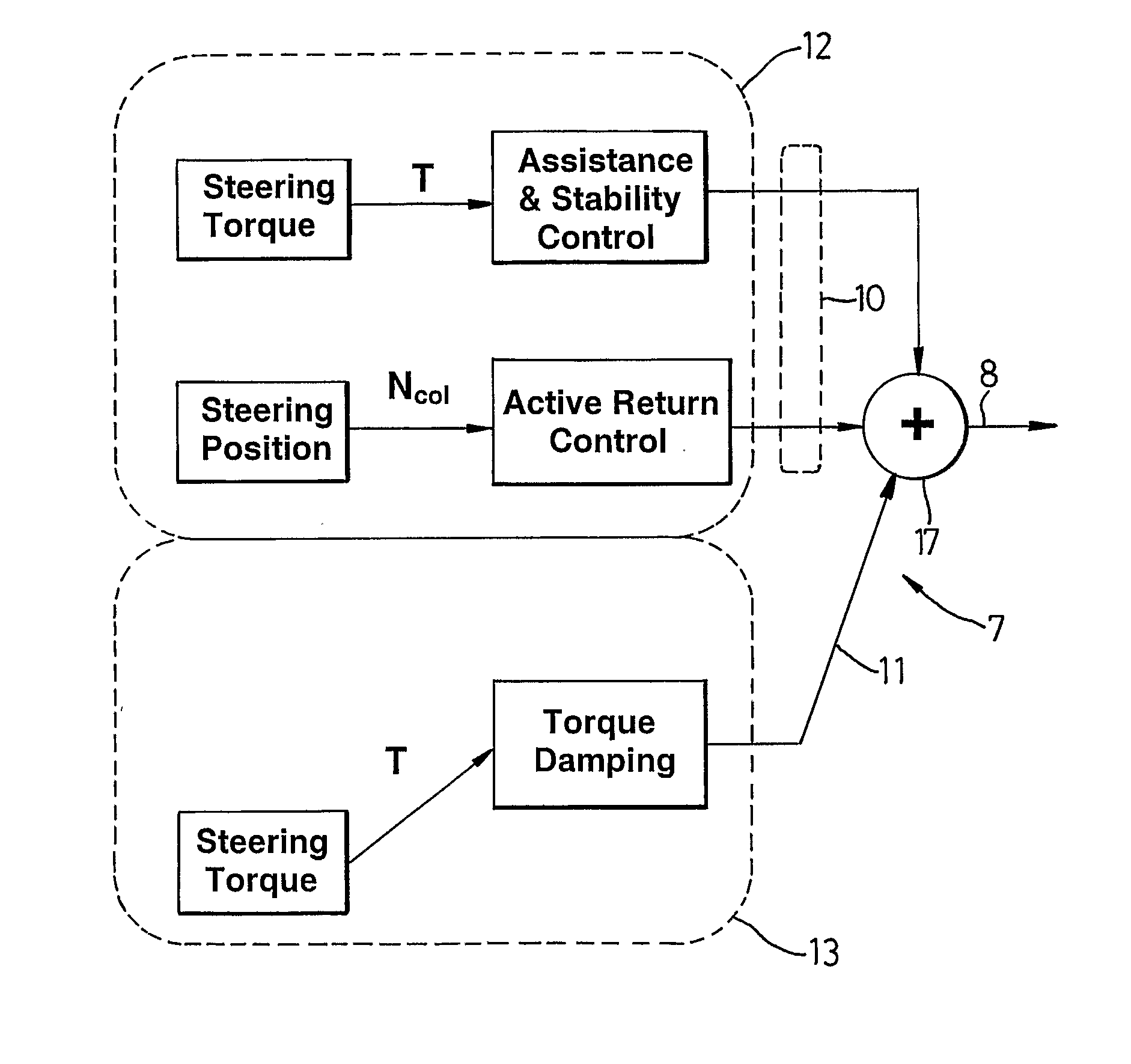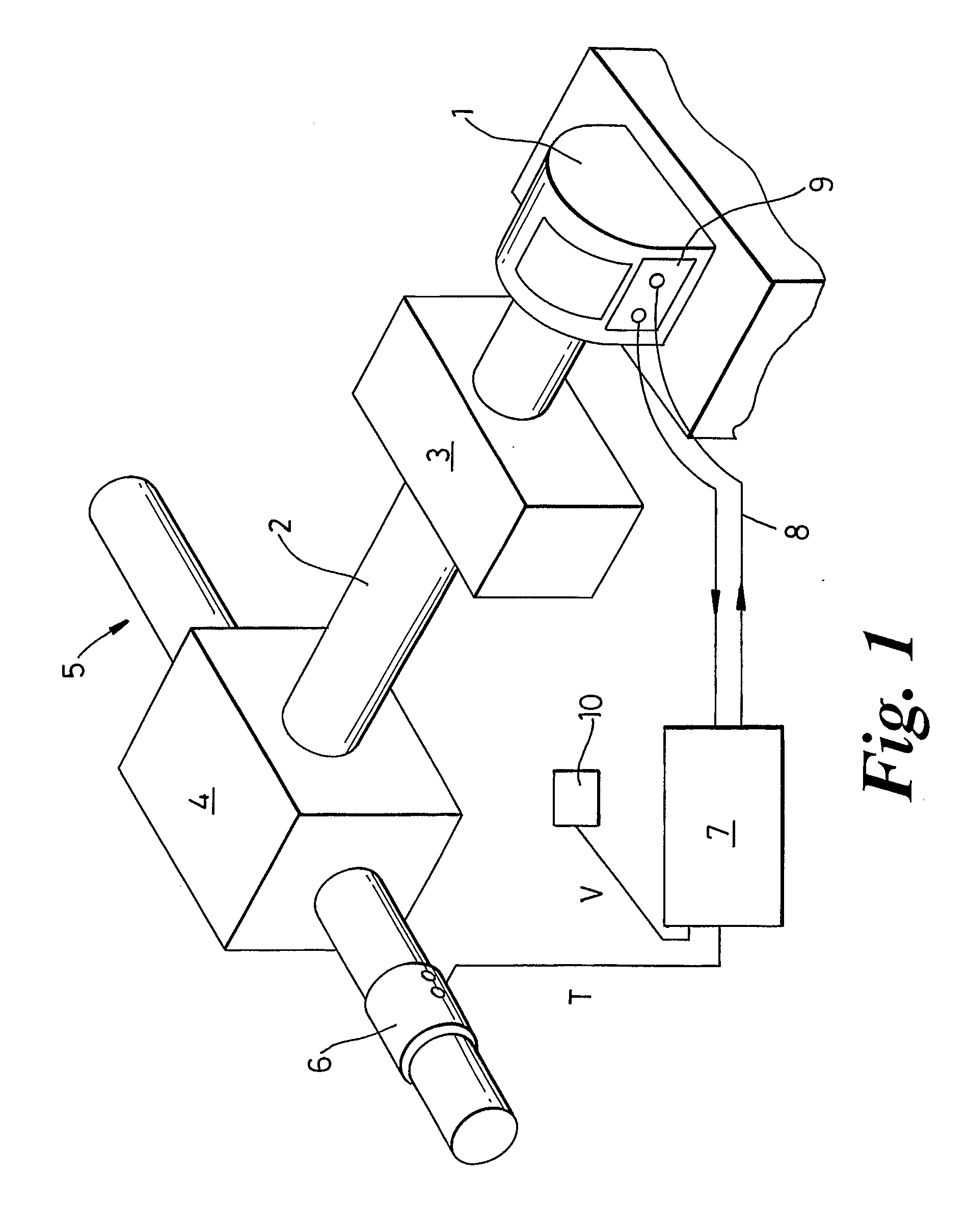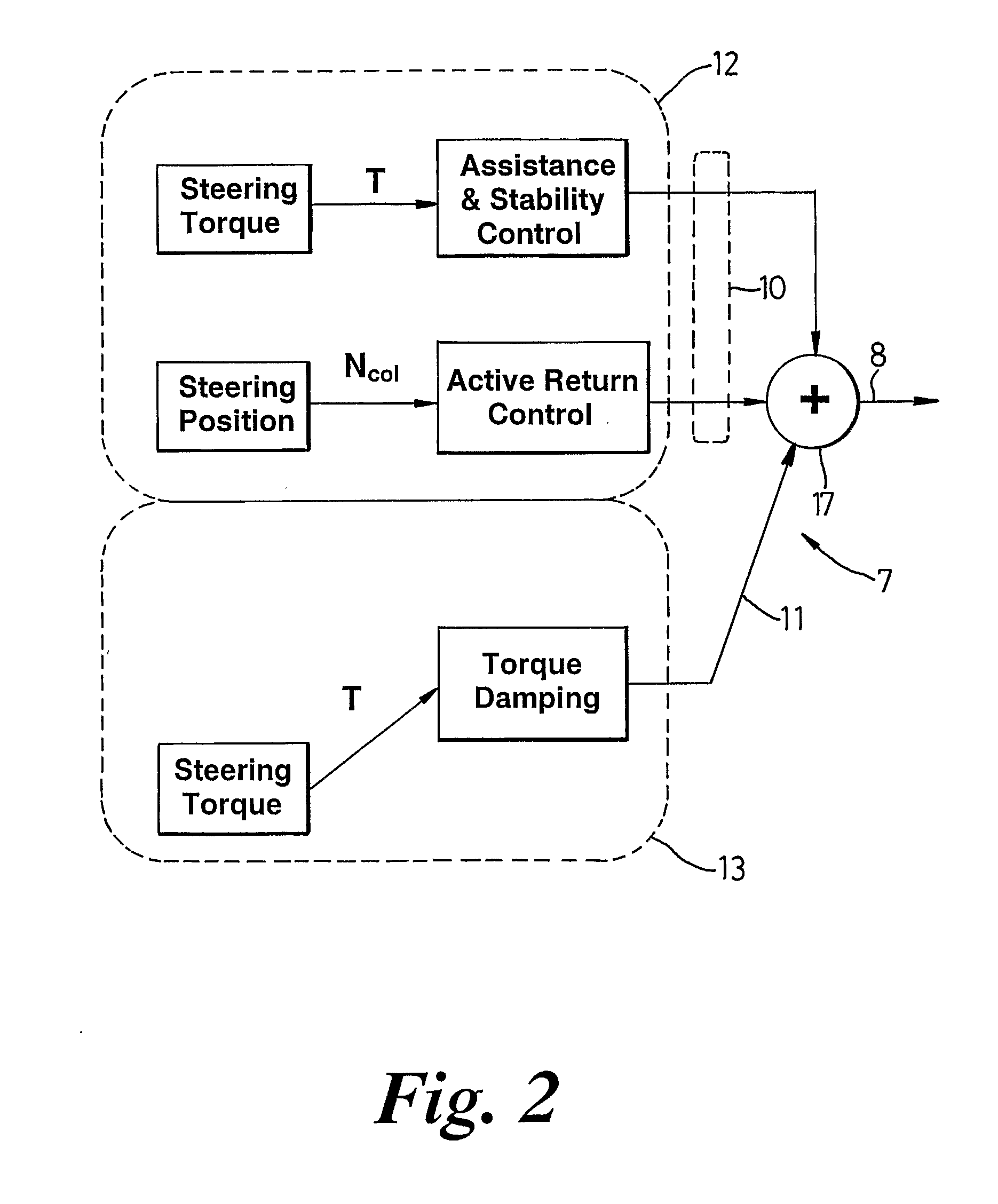Electrical power assisted steering system
a technology of steering system and electric motor, which is applied in the direction of steering initiation, instruments, vessel construction, etc., can solve the problems of called “fish-tailing” of the vehicle, and the damping component reducing the actual torque output of the motor, so as to improve the feel of low speed manoeuvres and reduce the amount of damping
- Summary
- Abstract
- Description
- Claims
- Application Information
AI Technical Summary
Benefits of technology
Problems solved by technology
Method used
Image
Examples
Embodiment Construction
[0034]An electric power assisted steering system is illustrated in FIG. 1 of the accompanying drawings. The system comprises an electric motor 1 which acts upon a drive shaft 2 through a gearbox 3. The drive shaft 2 terminates with a worm gear 4 that co-operates with a wheel provided on a portion of a steering column 5 or a shaft operatively connected to the steering column.
[0035]The steering column 5 carries a torque sensor 6 that is adapted to measure the torque carried by the steering column that is produced by the driver of the vehicle as the steering wheel (not shown) and hence steering column is turned against the resisting force provided by the vehicles road wheels (also not shown). The output signal—referred to herein as the torque signal T—from the torque sensor 6 is fed to a first input of an electric circuit which includes a signal processing unit 7. This is typically an ASIC dedicated integrated circuit.
[0036]An angular velocity sensor is also provided on the steering co...
PUM
 Login to View More
Login to View More Abstract
Description
Claims
Application Information
 Login to View More
Login to View More - R&D
- Intellectual Property
- Life Sciences
- Materials
- Tech Scout
- Unparalleled Data Quality
- Higher Quality Content
- 60% Fewer Hallucinations
Browse by: Latest US Patents, China's latest patents, Technical Efficacy Thesaurus, Application Domain, Technology Topic, Popular Technical Reports.
© 2025 PatSnap. All rights reserved.Legal|Privacy policy|Modern Slavery Act Transparency Statement|Sitemap|About US| Contact US: help@patsnap.com



